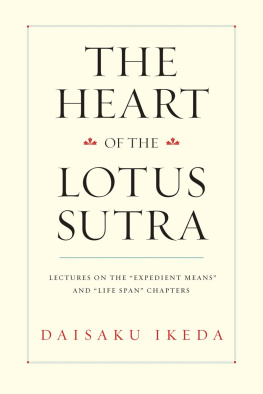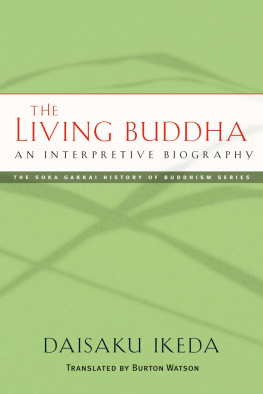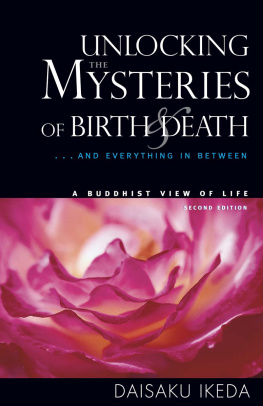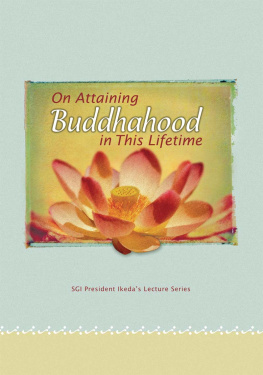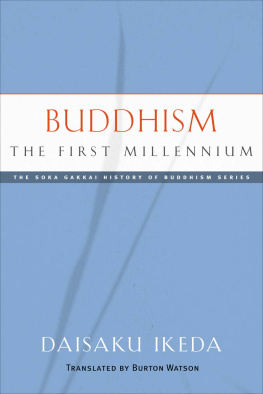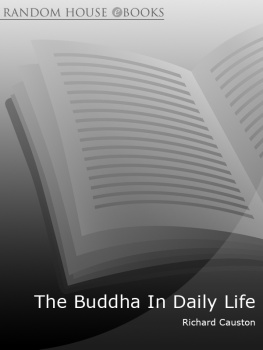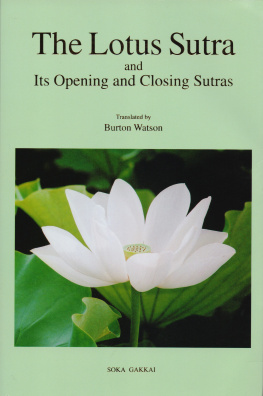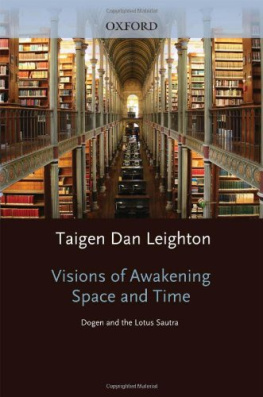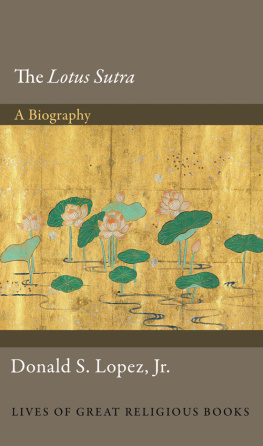

Published by World Tribune Press
606 Wilshire Blvd.
Santa Monica, CA 90401
2013 by the Soka Gakkai All rights reserved.
Printed in the United States of America.
Cover and interior design by Gopa & Ted2, Inc.
ISBN: 978-1-935523-88-6
LCCN: 2013949522
10 9 8 7 6 5 4 3 2 1
Contents
Index

Editors Note
T HE H EART OF THE L OTUS S UTRA brings together in one volume SGI President Ikedas lectures on the Expedient Means and Life Span chapters. These lectures originally appeared in the World Tribune from May 19, 1995, through April 5, 1996, and were published those same years as a three-volume work titled Lectures on the Expedient Means and Life Span Chapters of the Lotus Sutra.
This work provides a line-by-line explanation of the key prose section of the Expedient Means chapter and the prose and verse sections of the Life Span chapter. Nichiren Daishonin taught that the Lotus Sutras core teachings were contained in these sections, and he often urged his followers to recite them as a way to supplement their chanting of Nam-myoho-renge-kyo.
He never specified a format for such recitations, however, and the format evolved over the centuries. At the time these lectures were first published, the liturgy included all three sections: an excerpt from the Expedient Means chapter, the prose section of the Life Span chapter and the verse section of the Life Span chapter. SGI members recited these sections five times in the morning and three times in the evening.
In 2002, SGI adopted the current format for gongyo, which no longer includes the prose section of the Life Span chapter and reduced the number of recitations to once in the morning and once in the evening. The change was made for two main reasons: (1) to allow members to concentrate on their primary practice, chanting Nam-myoho-renge-kyo; and (2) to simplify the practice and make it more accessible to people all around the world.
Though SGI members no longer recite the prose section of the Life Span chapter, we have included in this volume all the original lectures because of their invaluable content. We also have left the original language that may refer to SGI members recitation of the prose section, adding notes for clarity as necessary.
We have divided the book into three main sections: Expedient Means chapter, Life Span chapter prose section and Life Span chapter verse section. Each section begins with an introductory chapter and is followed by the pertinent sutra passages. Weve numbered each passage for easy reference.
In the years since these lectures originally appeared, new translations of the Lotus Sutra and Nichirens writings have been published. Weve updated the text accordingly. For frequently cited works, we provide the following abbreviated citations in the text:
- GZ, page number(s)refers to the Gosho zenshu, the Japanese-language compilation of letters, treatises, essays and oral teachings of Nichiren Daishonin.
- LSOC, page number(s)refers to The Lotus Sutra and Its Opening and Closing Sutras, translated by Burton Watson (Soka Gakkai: Tokyo, 2009).
- OTT, page number(s)refers to The Record of the Orally Transmitted Teachings, translated by Burton Watson (Soka Gakkai: Tokyo, 2004).
- WND, page number(s)refers to The Writings of Nichiren Daishonin, vol. 1 ( WND-1 ) (Tokyo: Soka Gakkai, 1999) and vol. 2 ( WND-2 ) (Tokyo: Soka Gakkai, 2006).
Impressions of My Mentors State of Life
T O THIS DAY, memories of my mentor, Josei Toda, lecturing on the Lotus Sutra come vividly to mind, each like a scene in a great painting.
After World War II, the Soka Gakkai was in a state of ruin as a result of the campaign of suppression waged against it by the militarist government. At that time, Mr. Toda, later to become the second Soka Gakkai president, began efforts to reconstruct the organization by delivering lectures on the Lotus Sutra to a handful of members.
I was a participant in the seventh series of lectures he gave, which began on September 13, 1948. That was in the autumn of my twenty-first year. The venue was the old Soka Gakkai Headquarters in Nishi-Kanda, Tokyo.
I see that everyones arrived, he began. There were fifty to sixty people present. President Toda, his eyes sparkling behind his glasses, gazed around the meeting place, which consisted of two small rooms. Then he cleared his throat and began lecturing in a frank manner.
I was instantly awestruck, electrified by the profound ideas, the great and intense confidence, the compassionate cry of concern for the world and humankind that seemed to gush from his very being.
President Toda would never make things deliberately difficult or complex. His lectures were clear, straightforward and easy to understand. Yet they glowed with the light of extremely profound truth. They conveyed philosophy rooted directly in life experience and in the Law that pervades the infinite universe. They were filled with breathtaking drama and joyous music. At one point, as I listened to him speak, the sun seemed to rise in my heart, and everything became brilliantly illuminated before my eyes.
That night, still filled with the thrill I felt during the lecture, I wrote a poem in the pages of my journal:
How I marvel at the greatness and profundity of the Lotus Sutra.
Isnt it the path to salvation for all humankind?
The teaching that enlightens one to the origin of life and the universe,
The fundamental principle revealed to enable all people to acquire the loftiest character and happiness.
I am twenty-one years old.
Since setting out on my journey of life, what did I contemplate, what did I do, what did I make the wellspring of my happiness?
From this day on, I will advance bravely.
From this day on, I will live resolutely.
I will live within the life of the Great Law, win over my sufferings.
True sadness inspires one to lead a great life.
I now see the true Great Path and perceive the true nature of life.
Astonished at his profundity and breadth of knowledge, someone once asked President Toda, When did you study these things?
Smiling warmly, he replied: While in prison during the persecution, I chanted Nam-myoho-renge-kyo sincerely and I studied. As a result, these things seem to have come back to me. The eighty thousand sutras, in fact, refer to my own life.
These lectures arose from the vast state of life of President Toda, who had awakened to the essence of Buddhism while in prison.
The Lotus Sutra of the Former, Middle and Latter Days
Later, President Toda developed the format for his lectures on the Lotus Sutra. He instituted beginners classes on the Expedient Means and The Life Span of the Thus Come One chapters specifically for those who had recently taken faith.
His lectures, so brilliant and full of conviction, planted the essence of Buddhism in the hearts of his listeners, without their even being aware of it. For these persons new to faith, many of whom thought of Buddhism only in terms of Shakyamuni, President Toda began each series of lectures by emphasizing that the Lotus Sutra is expressed differently according to the agedepending on whether it is the Former, Middle or Latter Day of the Law.
Next page
